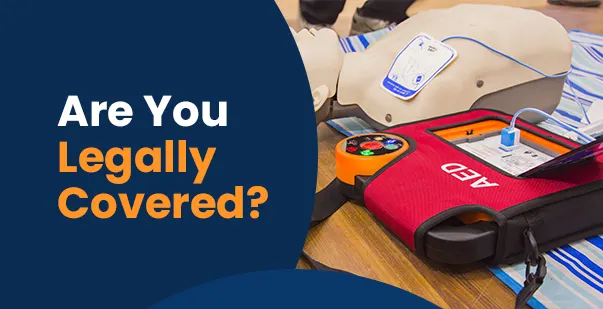Many businesses, schools, and public spaces invest in AEDs, but ownership comes with responsibility. Batteries can die, pads expire, and laws vary by state. A solid management plan keeps everything up to date and in working order. AED program management can improve survival rates, with studies showing that early defibrillation through AEDs increases cardiac arrest survival rates by 60% (source: American Heart Association). It ensures automated external defibrillators (AEDs) are always ready to save lives.
When someone collapses, an AED is needed immediately. If the device isn’t charged or the pads aren’t replaced, that delay could cost a life. That’s why businesses and organizations rely on structured AED management. It removes the guesswork and ensures lifesaving equipment is always ready when seconds count. But what exactly is an AED program management, and why do you need it? Read on to find out.
Master ACLS Now
Get ACLS certified with confidence
What is an AED?
An automated external defibrillator (AED) is a transportable medical device to treat sudden cardiac arrest. It scans the heart’s rhythm and, if needed, provides a shock to reestablish a normal rhythm. AEDs are simple to operate, with voice guidance and visual signals, and can be used by bystanders with minimal training. Early use of defibrillation enhances survival rates, particularly when followed by CPR.
What is AED management?
AED management is the process of ensuring automated external defibrillators (AEDs) are always functional, compliant with regulations, and ready for use in emergencies. It involves tracking maintenance, replacing expired pads and batteries, training staff, and keeping up with local laws. Without proper management, an AED may not work when needed, putting lives at risk. Businesses, schools, and public spaces with AEDs must have a structured plan to ensure these devices remain in peak condition.
According to Good Samaritan laws, proper AED management also offers legal protection to responders and organizations. This motivates responders to act during emergencies without worrying about liability.
Read more: AED Pad Placement FAQ.
What Are The Key Components of AED Management?
To ensure AEDs are functional, meet legal requirements, and are fully integrated into emergency response plans, it is important to have a well-organized AED management program. This program usually includes:
- Device Readiness Checks: Regularly inspect AEDs to confirm battery levels, unexpired electrode pads, and intact parts. Routine checks keep the devices ready for immediate use.
- Regulatory Compliance: Follow all state and local laws on AED placement, maintenance, and use. Staying compliant also supports legal protections under Good Samaritan laws.
- Staff Training: Train staff in CPR and AED use. Skilled responders can act fast during cardiac emergencies, improving survival outcomes.
- Emergency Response Plans: Create clear, written protocols and conduct regular drills. This ensures quick, coordinated action during real cardiac events.
- Data Tracking & Reporting: Maintain accurate logs of AED use and inspections. Report incidents as required by law to evaluate program effectiveness and stay audit-ready.
Why is an AED Management Program Important?
AED program management ensures devices are maintained, staff are trained, and legal requirements are met. A well-managed program improves emergency response, reduces legal risks, and increases survival rates for sudden cardiac arrest. Whether in a workplace, school, or public space, proper AED management can save lives.
Life-Saving Potential
Sudden cardiac arrest strikes 356,000 Americans annually, but immediate CPR and AED intervention save lives. Proper AED management prepares devices to be ready, facilitating quick emergency response and improving survival rates.
Compliance With Laws
The AED manager facilitates compliance with state legislation regarding placement, maintenance, and emergency medical services (EMS) coordination. It minimizes legal risk, penalties, and liability, which further maximizes emergency preparedness and safety.
Liability Protection
An AED program helps protect organizations from liability under Good Samaritan laws. Following federal and state regulations, conducting regular inspections, and coordinating with EMS ensures compliance. This reduces legal risks and keeps AEDs ready for emergencies, improving safety for everyone.
Workplace and Public Safety
An Automated External Defibrillator (AED) management program enhances workplace safety and improves public safety. Align with compliance and liability by having devices maintained and staff trained. This ensures organizations are well-equipped to deal with emergencies effectively, making them more capable of saving lives.
What Are the Legal Requirements for AED Programs?
AED programs ensure such life-saving machines are functional and properly utilized in case of an emergency. At the federal and state levels, regulations vary and include maintenance procedures for devices, training, and compliance with the law. Corporations, institutions, and public facilities must familiarize themselves with and comply with regulations to escape blame and be ready.
Federal AED Regulations
The FDA categorizes AEDs as Class III medical devices, and therefore they must be regulated strictly. AED manufacturers must demonstrate safety and efficacy prior to marketing the devices. The FDA also mandates that the sale of AEDs be by prescription to ensure medical supervision.
State-Specific AED Laws
Every state has its own laws concerning AEDs. The laws inform us where to put AEDs, whom to train, and how to keep them maintained. Some states require AEDs in gyms, schools, and big workplaces, and some states have less regulation. For example, California and New York mandate AEDs in public schools and sports facilities. Texas requires AEDs in some state buildings.
Registration, Maintenance, and Reporting Act
Many states require AEDs to be registered with local EMS agencies. This helps emergency responders track AED locations and include them in dispatch systems. After an AED is used, organizations must report the incident. Some states require detailed reports, including who used the device, what was observed, and any follow-up actions. Regular maintenance is also mandated in several states for the timely replacement of expired pads and batteries.
Steps to Implement an AED Program in Your Organization
So, how do you get an AED for your business? It starts with choosing the right device, placing it in key locations, and ensuring regular maintenance. Employees must receive training in CPR and AED use, and businesses should run emergency drills. The main steps to implement an AED program in your organization are as follows:
Step 1: Assess the Need for AEDs
Look at areas where people gather most, like break rooms, gyms, or entrances. These are high-risk spots for sudden cardiac arrest. Also, check your state’s AED rules to make sure your program follows legal requirements and is set up the right way.
Step 2: Purchase and Install AEDs
Buy FDA-approved AEDs that meet national safety standards. Place them in easy-to-spot areas with clear signs nearby. Fast access to an AED during an emergency can save a life, so make sure the placement is smart and highly visible.
Step 3: Train Staff and Conduct Drills
Give your team hands-on CPR and AED training. This boosts their confidence and skills. OSHA recommends having trained staff on-site. Run regular drills so employees know exactly what to do if someone has a sudden cardiac arrest at work.
Step 4: Maintain and Monitor the Program
Set a schedule to check your AEDs, make sure batteries work and pads haven’t expired. Follow all federal and state laws about AED maintenance. Keeping devices in good shape reduces risks and helps make sure they’ll work when truly needed.
Read more: Minimizing AED Use With Minimal Interruptions.
Who Needs an AED Program Management Plan?
AEDs save lives, but just having a device isn’t enough. Organizations need a structured plan to ensure AEDs are properly maintained, accessible, and used effectively. Workplaces, schools, gyms, and public spaces all benefit from an AED program to improve emergency preparedness.
Businesses and Workplaces
OSHA recommends AEDs in workplaces with large staff or high-risk environments, such as construction sites and factories. Employers are responsible for placing AEDs in key locations and ensuring staff are trained in CPR and AED use. Some states have laws requiring AEDs in offices, warehouses, and other business settings, making compliance essential.
Schools and Educational Institutions
Sports-related sudden cardiac arrest is rare but life-threatening, making AED access critical in gyms, fields, and auditoriums. Many states mandate AEDs in schools and sports facilities. Coaches and staff are often required to complete AED training. Schools that follow these guidelines help protect students, staff, and visitors from preventable tragedies.
Gyms and Fitness Centers
High-intensity workouts increase the risk of cardiac events, making AEDs essential in fitness centers. Many states require AEDs in gyms, especially those with large memberships. Gym owners must ensure that AEDs are visible and well-maintained and staff are trained to use them. Compliance with these laws enhances safety and reduces liability risks.
Public Facilities and Community Centers
Public places like malls, airports, and stadiums serve thousands of people daily. Cardiac arrests can happen anywhere, so AEDs must be available in high-traffic areas. Local governments often require AEDs in event venues and transportation hubs. These regulations help ensure emergency response is fast and effective, increasing survival rates.
Invest in AED management!
Properly managed AED programs ensure your equipment works, your people are trained, and your business is legally compliant. What is AED program management, and do you need it? AED program management instills a safety culture and readiness mindset. Successful execution of AED management improves survival rate but minimizes device failure through routine maintenance in compliance. Working with professionals for AED management brings peace of mind and can be a matter of life and death. Don’t delay; enroll now because preparedness isn’t just intelligent but lifesaving.
References:







